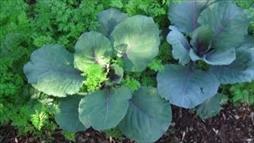All About Growing Cabbage

With its high concentrations of antioxidants and anti-inflammatory compounds, cabbage is one of the healthiest vegetables you can eat. As a cruciferous veggie, in the same family as broccoli, Brussels sprouts and cauliflower, it also contains glucosinolates, phytochemicals that break down into indoles, sulforaphane and other cancer-preventive substances.
Different types of cabbage (red, green and Savoy) contain different patterns of glucosinolates, which suggests you should try to eat a variety of cabbage for the best health effects. Its variety is another one of cabbage’s pluses — it comes in hundreds of different types and is incredibly versatile. Eaten raw, cabbage is a mainstay of cole slaw and other summer salads. It’s also one of the most popular base vegetables for creating your own homemade sauerkraut.
Cooked lightly and quickly, cabbage also makes an excellent side dish to virtually any protein source and can be seasoned in a number of different ways depending on the type of cuisine. You may be tempted to rely on your local grocery store for cabbage, but growing your own is so much more rewarding, both in terms of freshness and flavor. What’s more, growing cabbage is incredibly easy, and if you time your planting right you can expect to harvest it during the summer as well as the late cold-weather season.








